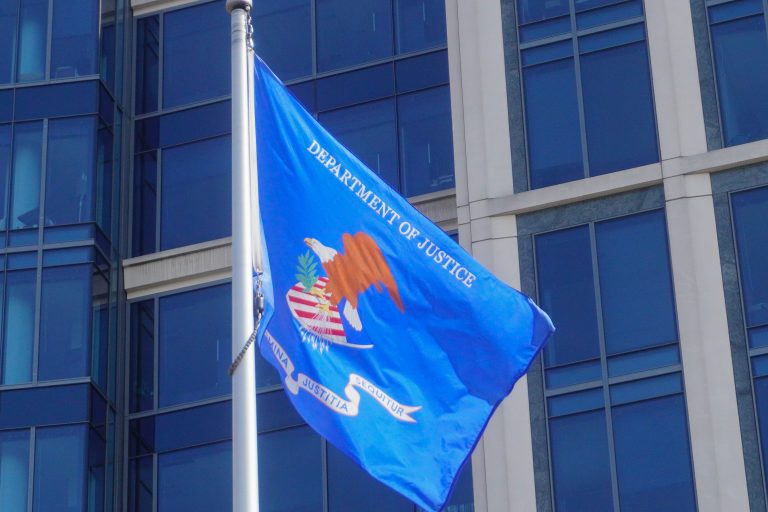More than four months have passed since President Donald Trump ordered the Department of Justice (DOJ) to take a pro-Second Amendment stance in ongoing legal cases and other controversies. A clear pattern has emerged as to what that looks like in practice.
Trump’s February order, dubbed “Protecting Second Amendment Rights“, began with more of a whimper than a bang as its original 30-day deadline for execution was quickly bypassed with little to show for it in terms of concrete DOJ activity. Since that early window, however, the effort has shown signs of life that gun-rights advocates might take encouragement from.
In late March, the DOJ launched a formal “pattern or practice” investigation into the Los Angeles County Sheriff’s Department and its slow walking of concealed handgun license applications. Around the same time, Trump ordered the creation of a new task force comprised of numerous DOJ personnel designed in part to “increase the speed and lower the cost of processing concealed carry license requests in the District of Columbia.”
Then, in early May, the department took the unusual step of asking the Supreme Court to take up a Second Amendment case to which the federal government isn’t a party. It requested that the justices strike down Hawaii’s ban on carrying guns on publicly accessible private property as unconstitutional in a challenge filed by gun-rights advocates. Finally, Attorney General Pam Bondi earlier this month sent a letter to the Pennsylvania Attorney General and president of the state’s sheriffs association arguing that some of the local sheriffs’ refusal to issue non-resident carry permits violates the Second Amendment and warning them that the practice could lead the DOJ to formally intervene.
Overall, the activity suggests that the Trump DOJ has the desire and will to aggressively police states and localities, particularly on the issue of gun carry, under its new “pro-Second Amendment” posture. However, this new DOJ hawkishness on local gun policy also belies the way the agency has continued to take the opposite tack in matters that affect the gun laws that it’s meant to enforce.
Early evidence that the Trump DOJ would not necessarily be the same legal ally to gun-rights advocates in federal gun-control matters first began to emerge in April on the issue of non-violent felons.
Throughout that month, Solicitor General John Sauer (R.) filed numerous opposition briefs responding to requests from non-violent felons hoping the Supreme Court might restore their gun rights. He also intentionally avoided filing an appeal in Range v. Attorney General, a case featuring the only appellate ruling to strike down the federal felon-in-possession ban and gun-rights advocates’ most sympathetic plaintiff, effectively ending the litigation and heading off the potential for lasting nationwide precedent.
That pattern of DOJ skittishness around the potential for the justices to hear cases from sympathetic plaintiffs that might imperil federal gun-control laws continued this month. After twice delaying a decision on whether to appeal the Fifth Circuit’s ruling in US v. Daniels, a case concerning the federal gun ban for marijuana users, the DOJ finally filed an appeal request with the Court last week. But it came with a catch. It said that the Court should hold the Daniels case until it decides what to do with a separate guns and drugs case, US v. Hemani, that the DOJ would prefer it to hear.
While not explicitly said, the request gives the strong impression of an attempt to stack the deck against a potential ruling in favor of marijuana users by boosting the case of the less sympathetic defendant. Daniels’ case stems from a simple traffic stop in which a police officer discovered “marihuana cigarette butts” in his ashtray and two firearms in the car. He admitted to smoking marijuana with some regularity but said he was not under the influence at the time of the traffic stop, nor did the government provide any evidence that he was. He had no prior serious criminal record, but a judge sentenced him to 46 months in prison for violating § 922(g)(3). The Fifth Circuit Court of Appeals has twice struck down 922(g)(3) as unconstitutional as applied to him because it said that America’s historical tradition only supports disarming those who are actively intoxicated, and even the Biden DOJ felt it was a compelling case for Supreme Court review.
Hemani, on the other hand, is accused of being a drug dealer who sold and used promethazine, while also being a user of marijuana and cocaine. According to the DOJ’s petition, he has also been under FBI surveillance for his alleged ties to affiliates of the Iranian Revolutionary Guard Corps. An FBI search warrant served at his home recovered a 9mm pistol, 60 grams of marijuana, and 4.7 grams of cocaine. Hemani was subsequently indicted under § 922(g)(3) but had his indictment dismissed only under the Fifth Circuit’s binding precedent on active intoxication and disarmament. His case, the DOJ argued, would provide a “better vehicle” for deciding “whether Section 922(g)(3) complies with the Second Amendment.”
On Tuesday, the DOJ also filed an opposition brief arguing against Missouri’s attempt to have the Supreme Court overturn an Eighth Circuit Court of Appeals decision that struck down its sweeping “Second Amendment Sanctuary” and gun control nullification law. While it did concede that the view of the DOJ under Trump differs from its predecessor by being more accepting of portions of the law that “constitute mere non-enforcement of federal law protected under the anti-commandeering doctrine,” it said that other portions that “purport to invalidate and derecognize” federal law “clearly violate” the constitution.
“The petition for a writ of certiorari should be denied,” the DOJ wrote.
Even some actions taken by the DOJ regarding federal law that have a “pro-gun” veneer have essentially preserved the regulatory status quo. The DOJ’s much-discussed Forced Reset Trigger settlement last month, for instance, undoubtedly marked a 180 from the Biden DOJ, which was aggressively cracking down on the devices as illegal machineguns. However, the settlement also averted what seemed likely to be a sweeping circuit precedent against the FRT ban, in light of the Supreme Court’s similar bumpstock decision. While the settlement returns previously forfeited triggers and allows the company Rare Breed Triggers to continue selling new ones, it will still serve to limit the spread of FRTs on the civilian market by attaching stipulations against copycat makers of the devices and against new versions created for handguns.
Perhaps most instructive is the DOJ’s recent intervention in a Fifth Circuit Court of Appeals case over the legality of suppressors. While the Biden DOJ argued for the position mimicked in the February three-judge panel ruling that suppressors aren’t “arms” covered under the Second Amendment, the Trump DOJ filed a brief last month taking the opposite position, which some gun-rights advocates found encouraging.
However, in the same brief, DOJ nevertheless argued that the NFA’s regulation of suppressors is still constitutional because “it imposes a modest burden on a firearm accessory that is consistent with this Nation’s historical tradition because suppressors are specially adaptable to criminal misuse.” It also argued against the Fifth Circuit dismissing the existing ruling and taking the case en banc.
Perhaps it’s unsurprising that the DOJ would closely guard its own legal prerogatives and instead channel the President’s wishes onto other targets. Despite the President’s penchant for busting political norms, the DOJ is typically a small-c conservative institution by nature and has an interest in maintaining, rather than reducing, its enforcement purview.
But many gun-rights advocates nevertheless had high hopes that the second Trump administration would take a far more energetic approach to gun control policy rollback in the federal government than the first time around. Thus far, that hasn’t materialized.






